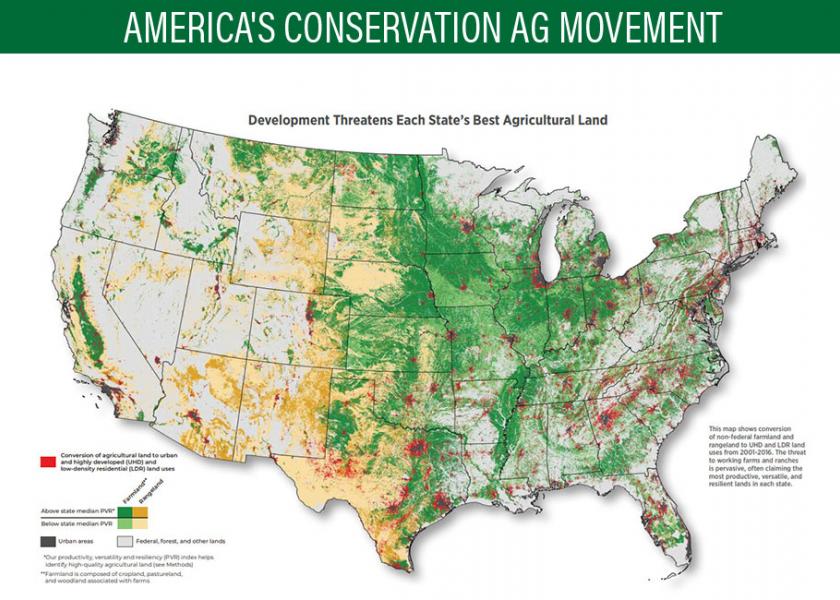Under Pressure: See How Development Threatens Farmland

You know the main culprits of farmland transformation. As cities expand, farmland is converted to parking lots, housing complexes and business locations.
This kind of urban development claimed 4 million acres of agricultural land between 2001 and 2016, according to a new report, “Farms Under Threat: The State of America’s Farmland” by the American Farmland Trust.
But guess what claimed 7 million acres during that same time period: low-density residential development. Yes, large-lot housing on 1-to-20-acre parcels is stifling out farmland.
“All across the country, scattered, large-lot housing has been fragmenting and disrupting farming and ranching for years,” says John Piotti, president of American Farmland Trust. “Until this report, no one has been able to map and measure it.”
This is not a surprise to farmers and ranchers with medium- to large-city neighbors, and it is cause for concern.
“When non-farming neighbors start moving in, it gets much harder to farm,” Piotti says.
From 2001 to 2016, 11 million acres of agricultural land were paved over, fragmented, or converted to other uses, according to the report.
“That means, farmers and ranchers, on average, have 2,000 less acres every day on which to work to feed our communities, to sequester carbon, to make a living and support their families,” Piotti says.
While the 11 million acres of agricultural land is only about 1% of the 897,400,000 acres in farms in 2019, it does show a steady trend in the decline of farmland acres.
The AFT report layers on the productivity of the farmland to identify nationally significant land. This designation includes the most productive, versatile and resilient (PVR) land for sustainable food and crop production.
Key Stats about U.S. Farmland
10%: The U.S. is home to 10% of the planet’s arable soils—the most of any country.
From 2001 to 2016, 11 million acres of agricultural land were paved over, fragmented or converted to other uses. Of that total,
- 4 million were converted to urban and highly developed land (ex: subdivisions, big-box stores and parking lots)
- 7 million were converted to low-density residential land (ex: large-lot housing)
Agricultural land in low-density residential land areas was 23 times more likely to be urbanized than other agricultural land.
Top Forces Behind Agricultural Land Conversion
- Development pressure
- Weakened farm viability
- Challenges of transferring land to a new generation
The Most Threatened States for Agricultural Land Conversion*
- Texas
- North Carolina
- New Jersey
- Tennessee
- Georgia
- Rhode Island
- Connecticut
- South Carolina
- Massachusetts
- Delaware
- Florida
- Pennsylvania
*based on the amount of agricultural land converted from 2001 to 2016. The rapid pace of conversion in these states can be partly explained by population growth and weak land use policies, according to American Farmland Trust
This map from American Farmland Trust shows, in red, where non-federal farmland and rangeland were converted to urban and highly developed land or low-density residential land.
Read More
Our Incredible Vanishing Resource








